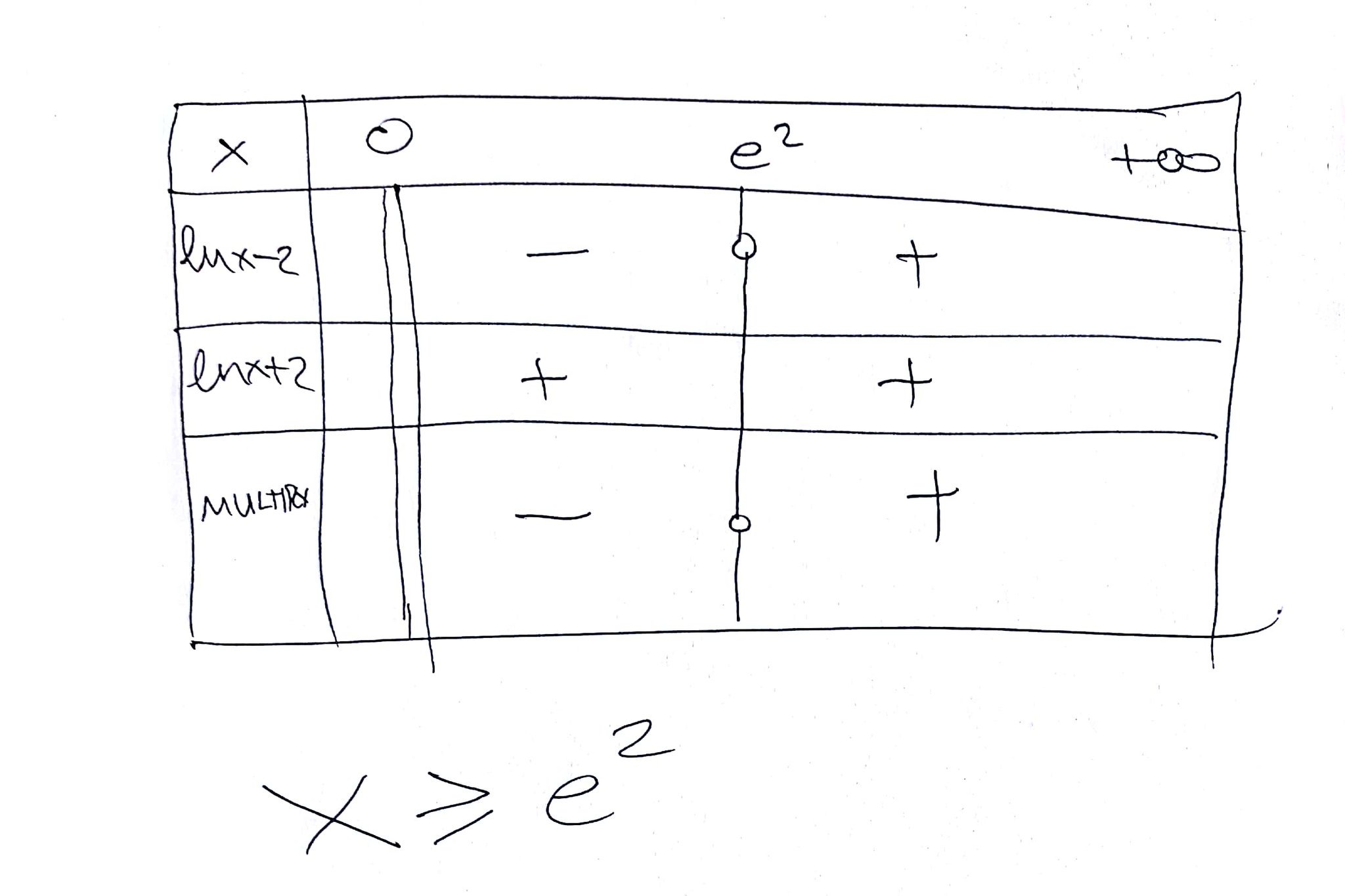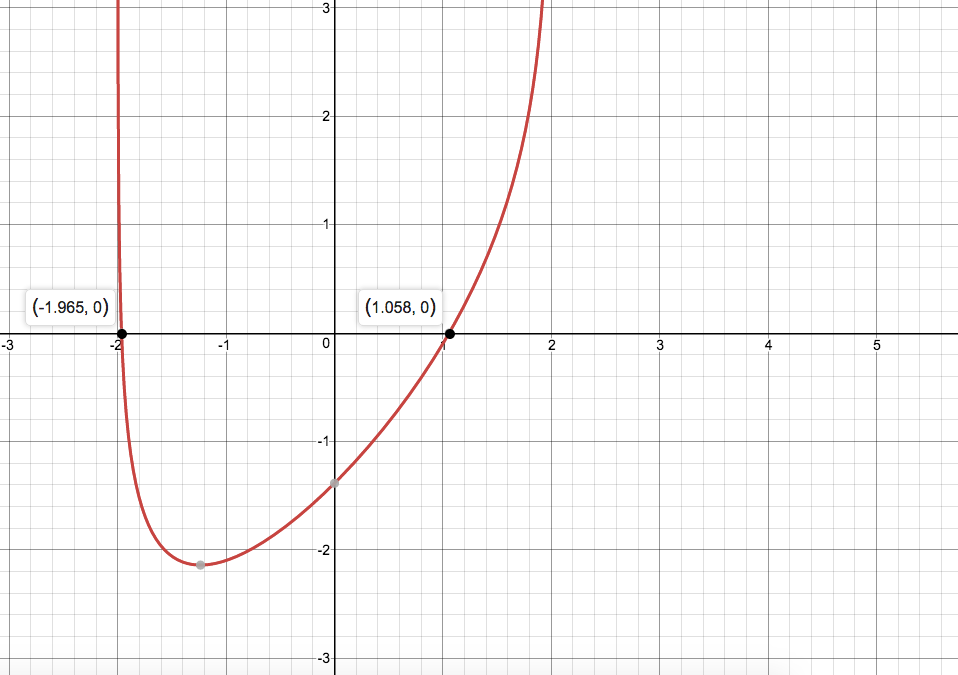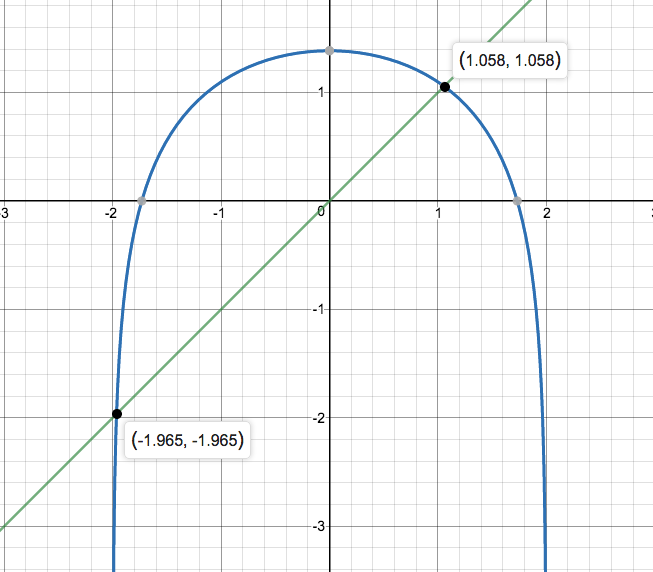#x-ln(4-x^2)=0# #<=>#
#x=ln(4-x^2)#
#lne^x=ln(4-x^2)#
#e^x=4-x^2#
#x^2+e^x-4=0#
#f(x)=x^2+e^x-4# , #x##in##R#
So we need to study #f#
We have #f(x)=0# #<=># #x^2-4+e^x=0#
#<=># #(x-2)(x+2)+e^x=0#
From the definition of #ln# we know this
#y=lnx# #<=>x=e^y#
So if i set #e^x=y# i have #x=lny#
now that makes the equation transform to
#(lny-2)(lny+2)+y=0#
- We have the sum of #a+b=0#
In order for this to be true we need either #a=0# and #b=0#
or the numbers to have opposite sign between them
So, either #(lny-2)(lny+2)=0# and #y=0#
which means #lny=2# or #lny=-2# and #y=0#
#lny=-2# #-># Impossible!
So we have #lny=2 <=> y=e^2# and #y=0#
If the numbers are opposite then that means #(lny-2)(lny+2)+y=0#
#<=># #ln^2(y)-4=-y#
However, #y>0# , #-y<0#
So we need #ln^2(y)-4>0#
#g(y)=ln^2(y)-4, y>0#
#g(y)=0 <=> y=e^2# (unique root)

A Graphical interpritation:

Graph of # y = x - ln(4-x^2 ) # where roots are the solutions

The graphs, #y =x and y = ln(4-x^2) # where the intisections are the solutions





